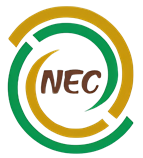Educating Consumer Awareness on Halal Issues: A Case Study of Viral Products Mixue and Ai-Cha in Malaysia
DOI:
https://doi.org/10.64008/gpej.v1i2.43Keywords:
consumer education, halal awareness, halal literacy, mixue and ai-cha, syubhahAbstract
This qualitative study explores the rise of viral beverage brands Mixue (China) and Ai-Cha (Indonesia) among Malaysian Muslim consumers, focusing on the implications of their uncertified halal status. Despite Malaysia’s comprehensive halal certification system governed by JAKIM, many consumers—especially youth—exhibit limited awareness and verification practices regarding halal compliance. This study aims to assess halal literacy, identify behavioral gaps, and propose educational strategies to address syubhah (doubtful) consumption. Using document-based content analysis of official guidelines (MS1500:2019), Islamic jurisprudence, media discourse, and consumer behavior literature, findings indicate that brand aesthetics, social media influence, and pricing often outweigh religious considerations. The results underscore an attitude-behavior gap, where consumers affirm halal values but do not consistently act on them. The study concludes that enhanced formal and informal halal education, particularly among youth, is critical to strengthening faith-aligned consumption. Recommendations include multi-platform public outreach and curriculum integration to foster informed, ethical, and faith-conscious consumer behavior.
References
Al-Bukhari, M. I. (2001). Sahih Al-Bukhari, Kitab al-Iman, Hadis no. 52. Dar Ibn Kathir.
Al-Nawawi, Y. (1996). Syarh sahih Muslim. Beirut: Dar Ihya al-Turath al-‘Arabi.
Al-Nawawi, Y. (1996). Al-Majmu’ Syarh al-Muhadhdhab. Beirut: Dar al-Fikr.
Ahmad, A., Rahman, A. A., & Ariffin, M. (2021). Halal awareness and purchase intention: The impact of digital platforms. Journal of Islamic Marketing, 12(8), 1502–1517. https://doi.org/10.1108/JIMA-09-2020-0289.
Ajzen, I. (1991). The theory of planned behavior. Organizational Behavior and Human Decision Processes, 50(2), 179–211. https://doi.org/10.1016/0749-5978(91)90020-T
Al-Jalalayn, J. & M. (2007). Tafsir Al-Jalalayn. Trans. Feras Hamza. Amman: Royal Aal al-Bayt Institute.
Bernama. (2023). Status halal Mixue masih belum diputuskan – JAKIM.
Braun, V., & Clarke, V. (2006). Using thematic analysis in psychology. Qualitative Research in Psychology, 3(2), 77–101. https://doi.org/10.1191/1478088706qp063oa
Creswell, J. W. (2014). Research design: Qualitative, quantitative, and mixed methods approaches (4th ed.). SAGE Publications.
Fadhlina, S., & Nor, H. M. (2024). Halal products in Malaysia: A bibliometric analysis. Food Research, 8*(3), 84–91. https://doi.org/10.26656/fr.2017.8(3).305.
Hanafiah, M. H., Ismail, A., & Rosli, M. H. (2021). Awareness and attitude of halal food products among university students. Journal of Halal Research, 5(1), 15–23.
Hashim, N. I., Mohd Fauzi, N., Mohamad Zan, U. M. S., & Radin Eksan, S. H. (2024). The dynamics of halal food sector in Malaysia: Insights into consumer perception, purchasing behavior, and influencer marketing. Asian Journal of Social Science Research, 6*(2). https://doi.org/10.5281/zenodo.14580368.
Harian Metro. (2024). Ai-Cha tarik perhatian pengguna, halal diragui.
Halal Development Corporation. (2022). Malaysia halal industry master plan 2030. HDC. https://www.hdcglobal.com
Ibn Kathir, I. (2000). Tafsir Al-Qur’an al-‘Azim (Tafsir Ibn Kathir), Vol. 1. Dar al-Fikr.
JAKIM. (2023). Manual prosedur pensijilan halal Malaysia 2020 (Semakan Ketiga). Jabatan Kemajuan Islam Malaysia. https://www.halal.gov.my
JAKIM. (2023). Direktori halal Malaysia.
Kamarulzaman, N. H., & Syed Khalid, W. M. A. (2019). The challenges of halal food industry in Malaysia: A case of non-compliance among food manufacturers. International Journal of Supply Chain Management, 8(5), 175–181.
Kamarulzaman, Y., & Syed Khalid, W. (2019). Challenges in halal certification process in Malaysia. International Journal of Halal Studies, 2(2), 33–45.
Muslim, I. Al-H. (2006). Sahih Muslim, Kitab al-Musaqah, Hadis no. 1599. Dar al-Ma’rifah.
MS1500:2019. (2019). Halal food – General requirements. Department of Standards Malaysia.
Norazah, M. S. (2017). Halal awareness and consumers’ purchase intention. Journal of Islamic Marketing, 8(2), 264–277.
Norazah, M. S. (2017). Halal awareness and product purchase intention: Evidence from Malaysia. International Review of Management and Marketing, 7(1), 1–7.
Qaradhawi, Y. (1994). Halal dan haram dalam Islam (M. Arifin, Trans.). Kuala Lumpur: Pustaka Salam.
Riaz, M. N., & Chaudry, M. M. (2004). Halal food production. CRC Press.
Risza, H. (2024). The role of universities in pioneering halal product innovation and education in Indonesia. AL-ISHLAH: Jurnal Pendidikan, 16(2), 821-829. https://doi.org/10.35445/alishlah.v16i2.5218.
Shafie, S., & Othman, M. N. (2006). Halal certification: An international marketing issues and challenges. International Marketing Review, 23(5), 465–481.
Sahih al-Tirmidhi. (n.d.). Hadith no. 2518: Leave that which makes you doubt for that which does not make you doubt.
Stibe, A., Krüger, N., & Behne, A. (2022). Knowledge behavior gap model: an application for technology acceptance. In International Conference on Mobile Web and Intelligent Information Systems (pp. 3-17). Cham: Springer International Publishing. https://doi.org/10.1007/978-3-031-14391-5_1.
Talib, M. S. A., & Johan, M. R. M. (2012). Issues in halal packaging: A conceptual paper. International Business and Management, 5(2), 94–98.
Wilson, J. A. J., & Liu, J. (2010). Shaping the halal into a brand? Journal of Islamic Marketing, 1(2), 107–123.
Downloads
Published
Issue
Section
License
Copyright (c) 2025 Nur Amalina, Normarlina (Author)

This work is licensed under a Creative Commons Attribution 4.0 International License.





